“He who every morning plans the transaction of the day and follows out that plan, carries a thread that will guide him through the maze of the most busy life. But where no plan is laid, where the disposal of time is surrendered merely to the chance of incidence, chaos will soon reign.”
—Victor Hugo
Or simply stated: “Plan your work and work your plan.”
(An oft-quoted saying which is difficult to attribute to one source—Google is your friend.)
In January I laid out my goals and plan for the year in this article, Sinister, Occam’s Razor, and 2018. Achieving the Sinister standard is the “overall” goal for the year and in the first quarter of the year two other goals have been achieved or are “in process”: 1) teaching the SFG Level II, and 2) SFL in May. Teaching the SFG Level II went very well and my inclusion of Level II skills into my movement prep and Strength Aerobics had me prepared for the weekend. SFL prep started in earnest after the Level II as planned (basically).
Spoiler alert: training observations at the end of the article.
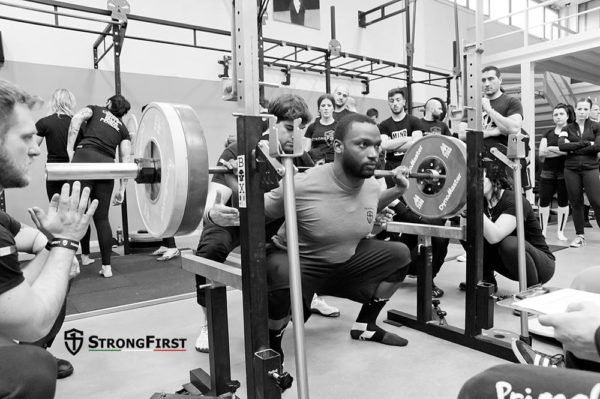
So my initial plan looked like this, and some interesting training observations are below.
You can check out my training from Dec. 17, 2017 thru March 26, 2018 in the Training Logs on the StrongFirst Discussion Forum. In it you will see that the program up until the Level II SFG in February was pretty close to the Sinister plan above. Then training switched over to a barbell focus to prep for the SFL Certification but with kettlebell snatches for “conditioning” starting on March 6, 2018. But as you can see below the plan is different than what I had envisoned earlier in the year.
The barbell plan came together very simply, but different from the prospective plan above. I had my first couple of very light barbell sessions and counted the weeks back from the goal date of the SFL and then did the math of how much I needed to increase each week to hit the standards by that date. This allowed me to quickly and easily plan the weights for each session; with the exception of some jumps related to how I was (will be) feeling or progressing. For example, I was not going to be benching and squatting the same weight so some larger jumps were necessary for the squat.
Sets and reps for the lifts tested for a single rep (deadlift and bench) I am keeping to 3 sets of 3 reps and just working the increases in weight. For the lifts that are tested for 5 reps (squat, military press, and deadlift), I am increasing weight for the week hitting 3 sets of 3 reps on the first session and then 3 sets of 5 reps the second session of the week.
(Note I am not doing that for the deadlift since 3×3 at 405 makes 315 x 5 a given.)
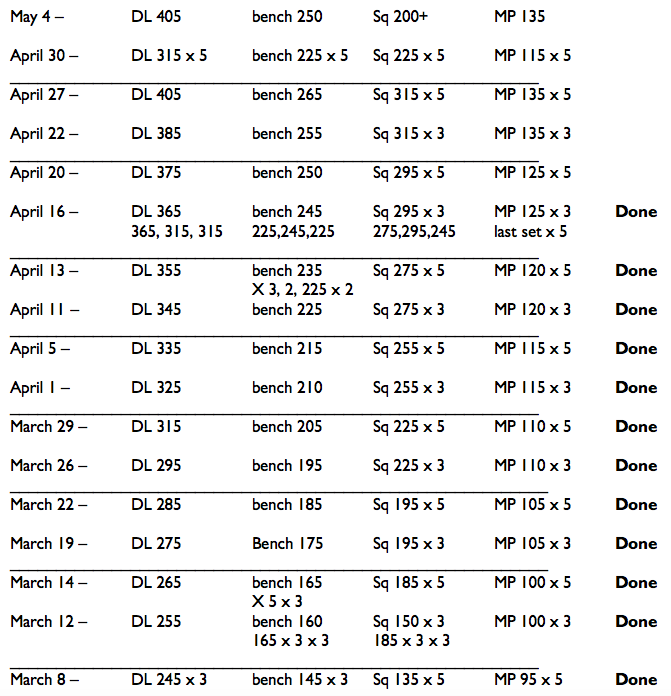
This is a bit different plan from the one I laid out and I may eventually have to split out some lifts on different days but for now it is working well.
Getting back to the barbell meant two things more than anything:
1. Controlling my ego
and
2. Allowing for tissue adaptation
Controlling the Ego
This was necessary because my best lifts were 10 years behind me and while I have lifted a barbell periodically I have not trained with the barbell since then.
For example:
March 31, 2008
ADAU Meet Report
ADAU Great Lakes PL meet
Squat: 475 was good with 2 whites and then I proceeded to miss my next two attempts at 520.
Bench: 295 opener—good, 310 second—good, pass on third.
DL: 545 opener—good and then proceeded to miss my next two attempts at 575.
And my best PL meet:
Oct. 12 or 13, 2007—AAU Nationals
Squat 518, Bench 286, DL 573 (@198)
Going into the gym and squatting, deadlifting, benching, etc. at very, very small percentages of my all-time bests was humbling but necessary for the second reason.
Tissue Adaptation
I like to joke that I am strong enough to hurt myself. As an example, I decided to get back into nail bending for a bit and quickly found myself back at the Grade 8 bolt but because I progressed too quickly and my tissues (ligaments and everything) was not conditioned to the efforts I sprained my left hand/wrist (which took a few months to fully heal).
Down to the level of the muscle fiber there are adaptations to loading that create the opportunity to “build the chassis” of the car so to speak. Meaning the structure can handle the loads because they have adapted to the stress. Due to my level of conditioning, power and strength in the ballistic or quick lifts (which oddly enough may not “build the chassis” well on their own), I can out-perform my structure. Not good, but by planning the work and working the plan my ego had to take a back seat and adaptation can occur.
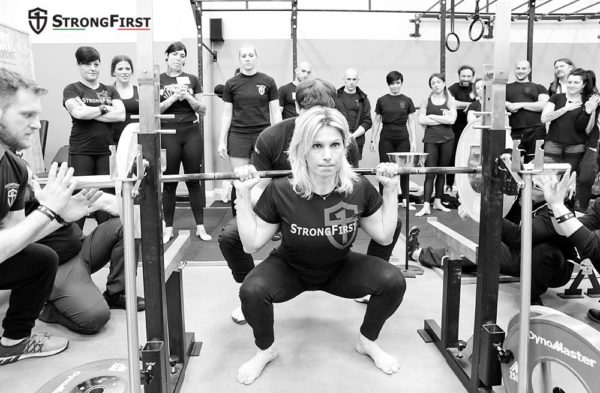
Observations and Lessons from the First Quarter
Asymmetrical Load vs. Symmetrical Load
During the first three months I had a significantly greater amount of asymmetrical loading (one-arm swings and get-ups) vs. symmetrical loading (barbell work, two-arm swings, or double kettlebell work). I believe this lead to an irritation of a scar tissue situation in my lower back (L5/S1 laminectomy 2003). Nothing I needed treatment for but an awareness of something being “off” (scar tissue and nerves become very sensitive “barometers” for how you are moving and adapting). To be honest I have likely had this programming asymmetry for quite a few years. So, from a programming point of view, a certain percentage of work within a kettlebell program needs to be symmetrical loading. I don’t have the percentages worked out and it may only end up being that 1/8thof the work needs to symmetrical, but some portion of your loading should be symmetrical.
Barbell work should take care of symmetrical loading if using a combined kettlebell and barbell program. And this was one of the things I felt immediately as I started the barbell work.
Two-Arm Swings
In the “no duh” category of observations is the impact of the two-arm swing. This symmetrical power work is something I have neglected but am now appreciating the impact of the two-arm swing. We usually progress very quickly past this exercise to get to one-arm swings and snatches. I know I have, and in hindsight it is a mistake. It is an oversight I am addressing: see my training from March 24. (see Training Log on the StrongFirst Discussion Forum)
Assistance Work
In my barbell routine I have added neutral grip pull-ups, triceps pushdowns, and leg press calf raises. Pull-ups started at sets of 5 prior to starting the first set of each different lift and I have added a rep a week. Since the lats are huge to…well, everything, it was important to get extra work in for the back. Triceps pushdowns are for two sets of 8-10 reps between sets of the leg press calf raise just to get some extra triceps work for the military press and bench. Leg press calf raise is done for 3 sets of 10 reps increasing 20 pounds a session.
And here is where it gets interesting…
I know it is popular to not work on calves, but as noted in this Bill Starr article it can be a difference-maker.
“Powerlifters usually avoid doing any specific calf exercises. As they don’t have to extend high on their toes for any of the three contested lifts, they conclude that there isn’t any reason to spend time working their calves directly.
What they fail to understand is that they need strong calves to establish a solid foundation for every exercise done while standing, including squats and deadlifts. I’ve convinced a number of powerlifters to add calf raises to their routines, and to their delight and surprise, they increased their deadlifts by as much as 20 pounds in a month.”
And for me, I have certainly known that my lower legs are a weak spot (if I wear shorts it looks like I am riding a chicken as Pavel would say), and that getting stronger in the lower legs will help—and it is already, I believe.
“Walking Around Strong”
Barbell work immediately provided something I have been missing. While I have had get-ups and Strength Aerobics sessions and some strength work in my program, I have not had barbell work and dedicated strength work in my program for quite a while. One of the issues is with training at home and training alone, to be honest. Also the idea of there being three branches of the StrongFirst School of Strength means balancing the programming to include all three within your/my programming. But what does “walking around strong” mean?
From my blog on Dec. 21, 2006:
“Walking around Strong…” This is a phrase we have used from time to time to describe how it feels to possess a confidence building level of strength. I was recently talking to a friend who has made some great progress over the last 6 months (more that in the previous years of training—thanks to KBs and PTP) and he was saying how much more confident he feels now that he is stronger. Cardio does not build this confidence—Strength builds this type of confidence.
This does not mean a cocky or flashy demeanor—This does not mean bragging or “using” your strength to intimidate—This should not have any negative meanings—although some will take it this way.
“Walking around strong” is an inner strength and confidence in your body and your self that allows you to be more relaxed and more confident. In our cores we know we want and need to be strong. It wasn’t that long ago that we truly needed, respected and worked for this type of strength—physical labor used to develop it, hunting and gathering used to develop it but now we are reduced to a level of ease (for some not all) that allows us to be weak.
And weakness breeds insecurity.
Dogs on leashes are a perfect example—once on a leash a dog will be aggressive and mean because it realizes that its ability to defend itself and its owner is limited by the restraint of the leash. Once off the leash the dog is relaxed and more likely to be friendly because it knows all its strength is available to it off the leash.
We are not so different. We realize that if we are weak we must put on a front of aggressiveness and hope that no one calls the bluff. This is not true strength—it is weakness in action.
Walking around strong is to walk around with a quiet confidence that allows you to help others. I have had the honor of meeting, training with and talking to some of the strongest people in the world and they are some of the nicest, calmest, and best people you would want to meet.
Unfortunately – there have been those that have been perceived as strong that have used their “strength” for “bad” reasons—intimidation, bullying, “power”, etc. and now strong can have a negative meaning for people. But true strength is a well of calm and an ability to conquer challenges—not with bragging but with quite purposefulness. And please realize that strength comes in many different forms and is built in many ways.
Plan the work and work the plan…but don’t be “confined” by it
The initial planning laid out in the January article morphed a bit but held true to the intent of the original plan. This is life and programming in action. Ben Franklin stated that “failing to plan is planning to fail.” In my opinion, plans are blueprints or ideas that are progressively adapted and improved as you move forward. Without the original plan you have nothing, no thread as Hugo put it, to guide your improvements and adaptations.
After the SFL I will move forward with more dedicated programming for the Sinister goal. And based on some early results with people (calling Jason Marshall) implementing the strategy laid out, I think progress will be good. And the increased strength and tissue adaptation from the barbell work will pay off as noted in my session on March 24 where the 44kg felt the best it has in quite a while.
How is your plan “in action”?
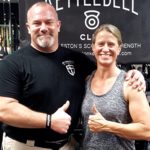
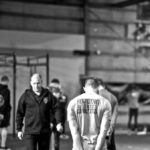
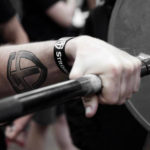
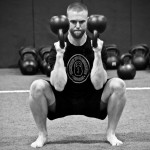




Brilliant as always Brett -at least the articles 🙂
I appreciate the definition of true strength and wholeheartedly agree. Please keep up the good work for it is both educational and practical advice.
I’ve also went back to the barbell after a 14 year layoff. During that time I mainly used double kettlebell workouts. Started out in January sumo deadlifting 435. Last week did 545 my all time PR at the age of 43. Mainly doing heavy singles, doubles and triples with total reps per session of ten. Do an accessory lift I call a deadlift row with lighter weight and more reps. Throw in some trap bar and or 20 rep squats too.
I’ve the barbell heavy lifts have really shocked my body and started leaning out but gaining weight.
Have fun, BTW we met when you were instructing at the spring rkc in 2004.
I have similar goals, Sinister standards and re-certifying at the Seattle SFL in November. I based my original plan on your article “Sinister, Occam’s Razor, and 2018.” Have made faster progress than anticipated on the Sinister goal and am going to dial back on the barbell training for a few weeks to really focus on swings, get-ups and recovery. Thanks for this great reminder that planning is important but can be modified.
Excellent Amy!
Great delivery! Love this Brett!
Thank you Derek